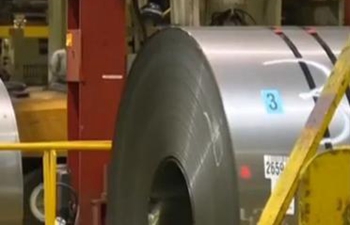SAN FRANCISCO, July 15 (Xinhua) -- North American forests have reached 78 percent of their capacity to sequester carbon and will gain only 22 percent capacity in a best-scenario in the next six decades, according to a study revealed over the weekend.
Researchers at University of California at Santa Cruz (UC Santa Cruz) conducted a detailed analysis of the capacity of North American forests to sequester carbon and found that forests play a critical role in alleviating the impact of climate change as trees absorb carbon dioxide from the atmosphere and store the carbon in their wood.
For the first time, the researchers studied the correlations of the natural process of forest growth and regeneration with climate changes that are likely to change the growth process over the next 60 years, UC Santa Cruz said in a statement.
Kai Zhu, lead researcher who is also an assistant professor of environmental studies at UC Santa Cruz, and his colleagues examined data from 140,000 plots in the U.S. Forest Inventory and Analysis program and the Canada Permanent Sample Plots program to record the historical growth of forests and project their growth into the future.
Their findings showed that the 22 percent growth of forest capacity in the upcoming six decades is the "best-case scenario," which reflects only idealized assumptions based on past forest performance and climate-change projections from the Intergovernmental Panel on Climate Change.
"The assumption was that existing forests will happily grow without future disturbances, but in reality, there will likely be disturbances," Zhu said.
Such disturbing factors could include wildfire, disease outbreaks, wind effects, and human-caused effects like the depletion of forests resulting from development.
Natural recovery of forests and climate change that affects their growth are both important biologically, Zhu said.
The researchers' future prediction of North American forest growth is built upon a complex growth model that incorporates contemporary data from 2000-2016 and "hindcast" observations from 1990-1999.
The model pictures future forest conditions under climate change scenarios in the 2020s, 2050s, and 2080s in North America, which revealed that climate change has a significant impact on the recovery trajectory of forests, whose overall growth has only limited potential.
North American forests are getting close to a saturation point today, which underlines the need to protect North American forests and reduce deforestation elsewhere, Zhe said.













